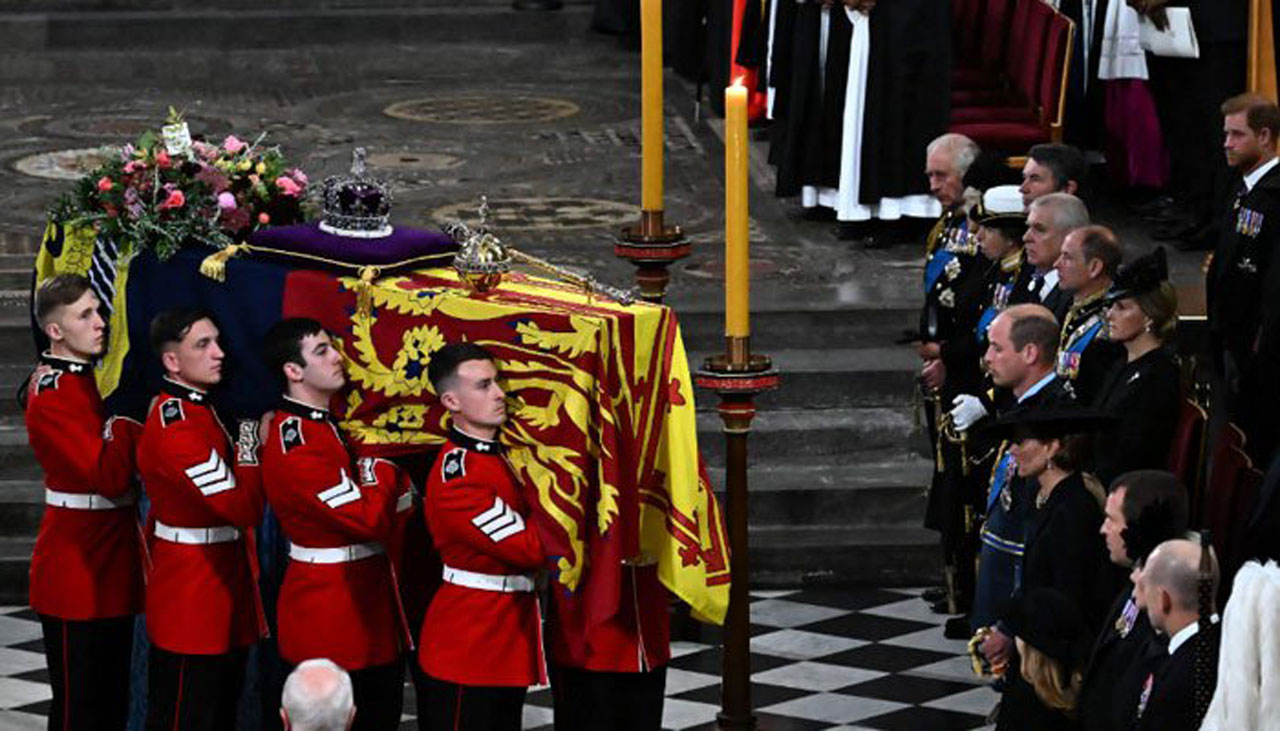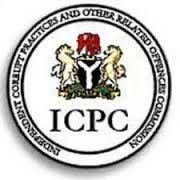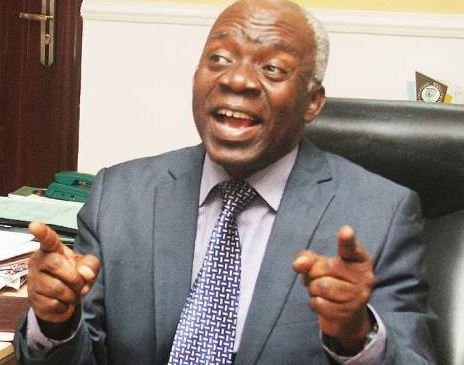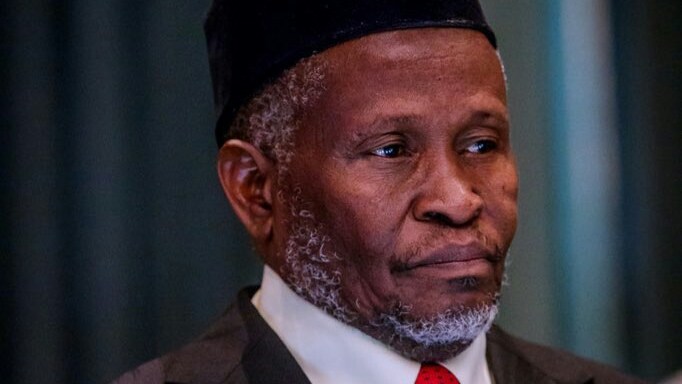• Solidarity to celebrate Queen testament to brotherhood among countries, says Osinbajo
• Prays King Charles does better than his mother
• With no eye contact, William, Harry keep apart at funeral
• Queen showed professionalism, dedication, says envoy
Yesterday, 9/19, will go down in history as a day of ceremony and sorrow, as the United Kingdom and the world bade farewell to Queen Elizabeth II with a state funeral that had the trappings of all the awe, pomp and prestige ever witnessed in decades.
The funeral drew presidents and kings, princes and prime ministers — and crowds in the streets of London and at Windsor Castle — to honour a monarch, whose 70-year reign defined an age.
In a country known for pageantry, the first state funeral since Winston Churchill’s was filled with spectacle: Before the service, a bell tolled 96 times — once a minute for each year of Elizabeth’s life.
Then, 142 Royal Navy sailors used ropes to draw the gun carriage carrying her flag-draped coffin to Westminster Abbey, where pallbearers bore it inside and about 2,000 people, ranging from world leaders to healthcare workers gathered to mourn.
The ceremony began at 10:45a.m. with members of the royal family all following behind the military procession that brought the coffin to the service from Westminster Hall, where the six-day lying-in-state ended four and a half hours earlier at 6:30a.m.
The coffin was followed into the church by generations of Elizabeth’s descendants, including King Charles III; heir to the throne, Prince William and nine-year-old George, who is second in line. On a wreath atop the coffin, a handwritten note read: “In loving and devoted memory,” and was signed Charles R — for Rex, or king.

The bearer party of the Queen´s company, 1st Battalion Grenadier Guards, carries the coffin of Queen Elizabeth II…yesterday.
Prince Andrew wrote: “Dear mummy, mother, Your Majesty, three-in-one. Your Majesty, it has been an honour and privilege to serve you. Mother, of the nation, your devotion and personal service to our nation is unique and singular; your people show their love and respect in so many different ways and I know you are looking on honouring their respect. I will miss your insights, advice and humour.”
“As our book of experiences closes, another opens, and I will forever hold you close to my heart with my deepest love and gratitude, and I will tread gladly into the next with you as my guide,” said Camilla, the Queen Consort.
The Dean of the medieval abbey, David Hoyle, told mourners to commence proceedings: “Here, where Queen Elizabeth was married and crowned, we gather from across the nation, from the Commonwealth and from the nations of the world, to mourn our loss, to remember her long life of selfless service, and in sure confidence to commit her to the mercy of God, our maker and redeemer.”
The hymn, ‘The Lord’s my shepherd, I’ll not want’, based on Psalm 23, which was sung at Queen’s wedding in 1947, was sang.
UK’s new prime minister, Liz Truss, delivered the second reading, while Secretary General of the Commonwealth, Baroness Patricia Scotland, read the first lesson.
The Archbishop of Canterbury, Justin Welby, during his sermon, said: “Her late Majesty famously declared on a 21st birthday broadcast that her whole life would be dedicated to serving the nation and Commonwealth. Rarely has such a promise been so well kept.
“Her late Majesty’s example was not set through her position or her ambition but through whom she followed. She was joyful, present to so many, touching a multitude of lives.”
The one hour service ended with two minutes of silence observed across the United Kingdom, after which the attendees sang the national anthem, now titled ‘God Save the King.’
The mourners at Westminster Abbey included U.S. President Joe Biden, French President Emmanuel Macron, Japanese Emperor Naruhito, Vice President Yemi Osinbajo and all of the living former British prime ministers and European royalty.
After the service, there was then the spectacular military procession and Royal Navy gun carriage that took her coffin on a walking procession across parts of central London unto Wellington Arch. After that 40-plus minute walking procession, the coffin was transferred into the new state hearse. The cortège then embarked on a little over two-hour drive to her resting place in Windsor.
From London to Windsor, there were tears as thousands lined the roads to watch the procession in both places. They paid their last respects and many threw flowers into the paths of the cortège as her body was driven to its final resting place. At about 4:00p.m., her committal service took place at the St George’s Chapel in Windsor.
Just before it ended, the Instrument of State – the Imperial Crown, Orb and Sceptre – were removed from the top of her coffin and then placed on a high altar. That was a symbol that her long 70-year reign has ended. The Instruments of State will be presented to King Charles III at his yet to be announced coronation date.
The late Queen was buried beside her late husband, the Duke of Edinburgh, inside the King George VI memorial chapel, which itself is located inside the St George’s Chapel, venue of her committal.
VICE President Osinbajo, yesterday, declared that the coming together of leaders from different parts of the globe to celebrate the life of the late Queen was a show of solidarity and goodwill by people from around the world. He said the action was also a testament to the brotherhood of nations.
Osinbajo spoke in London during a media chat with journalists after attending the funeral service. According to the Vice President, “for countries like ours, for Nigeria and for the Commonwealth, this has been very ennobling, very strengthening.
“I am sure that King Charles felt not just the honour of having so many people come by, but also the reassurance that there is a brotherhood across the world and that the Commonwealth remains strong, a Commonwealth of free nations, who willingly subscribe to work together to achieve sometimes, disparate political objectives, but clear economic objectives.”
Speaking about the significance of the event, Osinbajo said “it is a historic one that is unlikely to happen, perhaps in another lifetime; just the sheer enormity of all that has happened and the gathering of leaders from everywhere, the good will, good wishes and all of that from practically everywhere around the world.”
The Vice President then prayed for a successful reign for King Charles lll, noting, “one wishes King Charles very well indeed, and I think we are all anxious that he succeeds.
“And that, he perhaps, does even better than his mother, which is the hope of his mum. I am sure that the Queen will really hope that all her successors and in this case, King Charles, will do better than she did.”
Right after the funeral service, the Vice President and all the foreign dignitaries, about 500, were hosted to a reception by the UK Secretary of State for Foreign, Commonwealth and Development Affairs, Mr James Cleverly.
A Nigerian-born cleric, Pastor Agu Irukwu, was listed among officiating ministers at the funeral of Britain’s longest-serving monarch. A copy of the funeral order of events showed that Irukwu, the senior pastor of Jesus House, UK, was among representatives of the churches in England at the funeral.
Other clerics from the churches of England include the national leader, Assemblies of God, Pastor Glyn Barrett; Archbishop of Westminister, His Eminence Cardinal Vincent Michols, among others.
MEANWHILE, a rapprochement seemed far away as the two princes and their spouses avoided interaction. There was no eye contact or acknowledgment between Prince William and Prince Harry, as they walked behind the Queen’s coffin. The two princes were joined by their wives, Kate and Meghan.
Harry, wearing a morning suit on to which his medals were pinned rather than military uniform, the traditional dress permitted of working members of the royal family at ceremonial events, kept his gaze focused ahead during the procession from Westminster Hall to the Abbey and later at Windsor Castle.
Walking behind King Charles, the Princess Royal, Prince Edward and the Duke of York, who had also stood out in a morning suit, the brothers were at least side by side, rather than being buffered by their cousin, Peter Phillips, as had been the case at the funeral of the Duke of Edinburgh last April.
But those looking for any hint of a thawing of the cold-war that has marked relations since Harry, 38, left UK to build a new life in California, casting out criticism of his family as he did, were to be disappointed.
Studiously, the two men and their spouses avoided any interaction. Their eyes never met, physically a safe distance was always kept.
Meghan, 41, had not followed the tradition of female members of the royal family wearing a black lace ‘mourning veil’. She instead wore a black cape and dress and a wide-brimmed hat.
On arrival at St George’s chapel for the service of committal, William, Kate and their children waited at the head of the front pew to allow Harry and Meghan to pass by, before taking their own places. Again, there was no touch or nod to acknowledge a shared moment.
Every effort was being made, it seemed, to avoid distracting from the state funeral. The task of rebuilding of relations no doubt not made any easier by the rescinding of an invitation to the Sussexes to a reception attended by world leaders on the eve of the funeral.
Meanwhile, Harry’s ‘intimate and heartfelt’ memoirs are to come, while Meghan has said the couple are working on a ‘historical documentary’ through which she will share their love story.
ALSO, in Lagos State, British Deputy High Commissioner, Ben Llewellyn-Jones, said the Queen during her reign showed dedication and professionalism. He added that the new reign would strengthen relations and trade with Africa.
He said this at the Service of Commemoration in Honour of Her Majesty, Queen Elizabeth II, held in honour of her wishes. The event was held at his residence in Lagos.
He noted that though Britain practices a constitutional monarchy, her Majesty’s role was to stand above politics and ensure stability, adding that she visited every Commonwealth state except four, after being advised by doctors to limit international travel.
On King Charles III, Llewellyn-Jones said his reign would expand the relationship UK has with Africa.
“There are Africans in the cabinet of the UK noticeably, a Nigerian is the secretary of state for International trade, so this will further expand our relationship in terms of economy and volume of trade. The King would bring something different and new as every monarch has his own ways of operating,” he added.
According to him, during the time of waiting, King Charles III had understudied the queen and learnt a lot from her.
Lagos State governor, Babajide Sanwo-Olu, wished the new King well, while saying he had big shoes to fill as the Queen had great impact during her 70 years reign.
“I doubt if we would get a monarch like her, because her credentials would be difficult for future queens and kings to emulate. She would be remembered for being dutiful and transforming lives in the entire Commonwealth communities.
“The livelihood of the queen was one with humility, dignity and a lot of grace as she was very dutiful in all that she did in her years of service,” he added.
Other dignitaries at the event included Country Director, British Council, Lucy Pearson, President Nigerian British Association (N-BA), Abimbola Okoya, Prelate, House on the Rock Churches, Pastor Paul Adefarasin.
THEGUARDIAN






